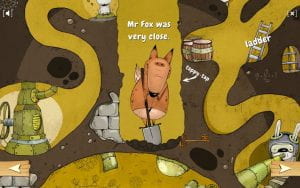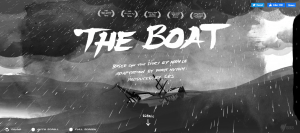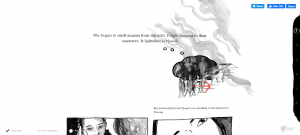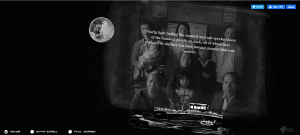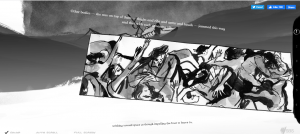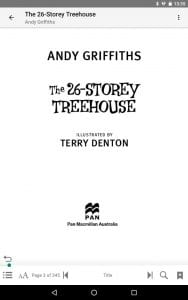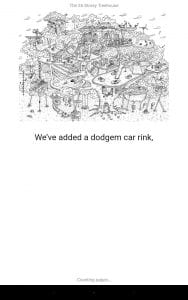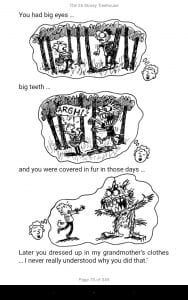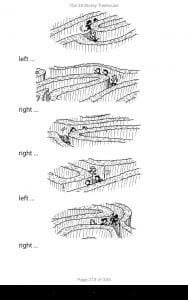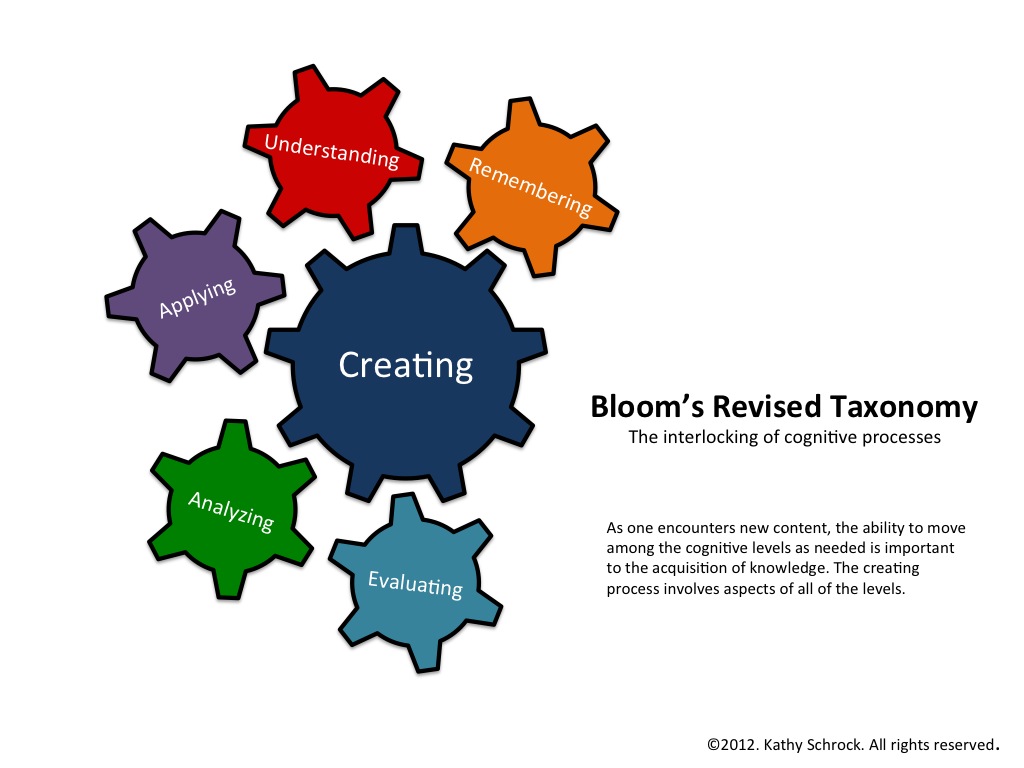Part A
I believe an effective Teacher Librarian (TL) is an individual who has a multi-layered approach to teaching and managing their library. They are an individual who constantly communicates with others, providing support and advice to their colleagues and members of their school community. The TL uses intrapersonal organisation skills to adapt their library program and integrate research-based learning that caters to 21st century learners. All aspects of the physical and digital library are managed by the TL as they combine both aspects to support their students in building a positive love of literature and learning.
Part B
Information Literacy
Information Literacy (IL) was a term that I was unfamiliar with prior to commencing my studies to become a TL. IL became a term that I continually wrestled to comprehend and understand throughout my first course ETL401. I explored the idea that our society continually needs to be aware of advances in technology in my blog post, The ever-expanding information society (Burns, 2019b). My first course certainly shifted my understanding of the role that a TL plays in maintaining a strong connection with their students as they implement technology to display information and research focusing on a chosen topic. I found that my perception of IL shifted significantly between how the learner interprets information and how they apply it with the use of technology when answering open-ended questions (Godwin, 2012).
Since starting my studies, my teaching career has changed from casual classroom teaching to working in my current school library at Greta Public School. This change has shifted my perspective of IL as I have gained flexibility, after a discussion with my principal and stage teams, to implement inquiry learning into my library lessons. Having this opportunity to build my own program around research-based learning has allowed my students to interpret and comprehend important information centring on individual thinking skills. I found that a lot of higher-order thinking needed to correspondence to our inquiry focus so that the students could branch out and research on their own (Gwyer, Stubbings & Walton, 2012). This often meant that I was enhancing what I already knew about integrating technology into a lesson but started to discover that the library environment can cater to the learner well beyond the use of physical resources (Burns, 2019d).
I really started to understand the adaptability of teaching research-based learning, particularly with my stage two and three students as a lot of their learning strived on finding new pieces of information. This way of learning provided opportunities to find new, interesting information and allowed my colleagues to observe any skills that their students needed further explanation or time to explore during library lessons. For example, in my stage three lessons summarising key facts needed further time to practise as each class developed this skill to scan for important information within non-fiction texts and listen for keywords during video links too. Demonstrating my own passion for a range of topics allowed these students to observe how a love of learning and searching for information that interests you can become fulfilling (Pendoley, 2019).
Once these skills were strengthened, students could start to experiment with finding information for themselves. I found that my first course, ETL401: Introduction to Teacher Librarianship, unpacked the connection between research and inquiry learning. This connection motivates the learner to explore and discover new information about something that interests them (Burns, 2019d). Following conversations with my primary teaching colleagues, they agreed to try using new technology programs that allowed more opportunities to interact with open-ended learning. The main program I chose to use was called Mindomo that allowed students to display their learning centring on our Geography inquiry topic about sustainability and the management of places (NSW Department of Education, 2019). Every student found this new program interesting to use as it allowed them to plan their ideas while also including hyperlinks about their chosen topic. This was fascinating as some students who often neglected coming to library lessons, would attend with interest and motivation to keep experimenting with the presentation of their research.
I found that during INF533: Literature in Digital Environments, my ability to teach about examples of literature strengthened after learning about transmedia storytelling. These stories shift between imaginative or informative texts, displaying different information in an open-ended setting. Kelly (2016) provided opportunities to branch out and explore the different ways that students learn, particularly focusing on the connection that technology-based activities have with Bloom’s Taxonomy. In my blog post, Transmedia and integrating technology into our busy curriculum!, I explored the different ways that working technologically can strengthen each student’s digital thinking strategies as a way to interpret information (Burns, 2020). Linking technology to areas of learning across the curriculum allows each student to explore new ways to research and present information.
Having students become more motivated to interpret information and include it in their own learning has been really fulfilling as this now allows for more open-ended tasks to be explored in our library time. Our school library does not have the most up-to-date technology, but the students are willing to work with what we have to offer. The small hub of ten laptops creates opportunities for small group activities to take place, which expands each student’s way of thinking as they listen and experiment with technology-based skills they have learnt during our lessons.
Management
Prior to commencing my studies, I always thought that the main part of managing a library is the physical environment. I found that this is partly true as a lot of the borrowing and accessioning side does occur continuously throughout the school year. However, I discovered that the TL needs to take on an immense balancing act to maintain an innovative learning environment in the library (Mahat, Bradbeer, Byers & Imms, 2018).
I learnt a lot of useful information and skills in ETL503: Resourcing the Curriculum. Before commencing this course, I had a fair idea that the curriculum was incredibly crowded, with so many lesson and assessment commitments from each Key Learning Area (KLA). The need to integrate technology throughout lessons is a significant learning curve that is still being discussed as a lot of teachers are continually learning to implement it appropriately (Randall, 2019).
Collaborating with my colleagues was a skill that I wanted to transfer over into my new role as the TL at my school. In the past, as a CT I would communicate with my colleagues continuously and I wanted to maintain this while teaching in the library. In my blog post, Program administration, I focused on the relationship I have with my colleagues as I worked towards becoming a collaborator and a steward within my school environment (Burns, 2019c). This highlighted communicating with others and bringing forward new programs to use during library lessons. Discussing a variety of ideas ensured that our students had the opportunity to use technology effectively during library lessons and during classroom learning too.
The concept of a Collection and Development Policy (CDP) was a completely new idea during ETL503. ‘Smartcopying’ was an important phrase that I needed to get my head around as the CDP allowed for chosen materials to be used for a particular purpose. Establishing multiple uses for digital content is a new way that impacts on how the reader can interact with literature (Harman, 2018). I discussed this idea in Reflection on library collections and development policies, to interpret the benefits or disadvantages that digital libraries hold for the user (Burns, 2019e). This idea of a digital library collection is still quite non-existent at my school, but it is something I can work towards sharing, particularly how to access local council-based digital library services for our students.

I also found that ETL505: Describing and Analysing Education Resources was crucial in managing all the different types of resources in our school library. Unpacking the sub-sections of the Dewey Decimal System (DDS) during ETL505, was a key part of the course that really assisted with interpreting the different subsections of the library (Gordon, 2013). I often found that students would continuously ask about the different types of the non-fiction books that were available in our library. I managed these questions by incorporating a visual stimulus as a guide to interpret the pre-existing colour coding in our school library (Clarke, 2013).
Greta Public School 2020 (Non-Fiction Colour coding)
 The concept that I absolutely loved learning about in ETL503 was ‘weeding.’ This concept was interesting to view in terms of the usability and the continual change that occurs in a library between the physical, digital and various subscription services (Burns, 2019f). Prior to my studies, I knew that one of the jobs of a TL is to remove old, out-dated resources from the library. I never fully understood how much of a turnover many information agencies have during this process until listening to Manuell (2020) during our virtual study visits. I am yet to complete this full process in my library but have undertaken the weeding of the teacher resource storeroom since starting in my temporary position. Chant (2015) encourages that using different methods of weeding creates an appeal to each TL as they benefit the library collection in a certain way. This weeded area has enabled teachers to quickly access this storeroom again and borrow relevant resources that will assist with their lessons.
The concept that I absolutely loved learning about in ETL503 was ‘weeding.’ This concept was interesting to view in terms of the usability and the continual change that occurs in a library between the physical, digital and various subscription services (Burns, 2019f). Prior to my studies, I knew that one of the jobs of a TL is to remove old, out-dated resources from the library. I never fully understood how much of a turnover many information agencies have during this process until listening to Manuell (2020) during our virtual study visits. I am yet to complete this full process in my library but have undertaken the weeding of the teacher resource storeroom since starting in my temporary position. Chant (2015) encourages that using different methods of weeding creates an appeal to each TL as they benefit the library collection in a certain way. This weeded area has enabled teachers to quickly access this storeroom again and borrow relevant resources that will assist with their lessons.
Greta Public School 2020 (Weeded teacher resource storeroom)
During remote learning this year, our school encouraged each CT to record picture books using the features on PowerPoint to display a story in a new digital format. This enabled students to have a connection with their CT and build their love of literature as the feedback was positive from many families. Reflecting on this interaction, PowerPoint videos assisted students in viewing and appreciating literature, similar to the future I discussed in my ETL402 blog post The future of children’s literature (Burns, 2019i). This idea ceased for the most part following the return to school, which meant that a lot of students have gone back to using physical books and our school is yet to include any other source of digital literature for students. I really want to build on implementing digital literature again as there are connections to areas of the local community that can act as a starting point. This could further allow students to become more involved in how they view literature through a community source of ebooks.
Leadership
In my first blog post The many roles of the teacher librarian, I highlight the idea that the TL takes on multiple roles within the library and school community (Burns, 2019a). These roles include components such as collaboration, community engagement and the learning and teaching side too. Each of these components focuses on just one part of how the TL can lead the school environment to utilise new pieces of technology and integrate them into lessons across different areas of the curriculum. Incorporating different technological skills into units of work across all KLAs will allow students to experiment and explore their learning using critical, creative thinking and general capabilities in the 21st century (Randall, 2019).
The concept that stuck with me during my studies has been ‘leading from the middle’ (Burns, 2019g). This concept was something I had never considered before as my prior knowledge of the role of a TL is to adjudicate and organise different events. This was a massive misconception on my part and this idea is still changing as I learn about more ways that the TL can inspire colleagues to work together. Leaders often have multiple qualities that develop over time as they integrate them into their chosen work field (Smith, 2016). A considerate and respectful leader in the library allows other people to have their say to work collaboratively and change areas of the learning environment, particularly the types of available resources.
A vision, passion and persuasion are important qualities that a strong leader should possess (Sutcliffe, 2013). When students and staff view the TL to have immense passion and drive in their profession, they will identify this learning space to be open and inclusive. Currently, our school library is used for lessons and during lunch or recess breaks. It is wonderful to have a small group of stage three library monitors that are also passionate about keeping our learning space ready for friends and other teachers to come and use.
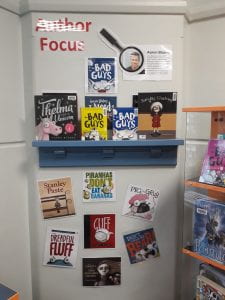 During the year there has been various wall spaces in the library that I wanted to update. Following a conversation with my principal, I have been able to update these spaces, including new shelving for our fiction section, to make students aware of the different pieces of literature that are available in our library. This variety of literature is often taken straight off the shelf once they are on display. For example, my author focus space highlights one author or illustrator that has a variety of books that are situated throughout our library. This provides incentive for the students to build their own interest in reading by trusting recommendations from their TL, particularly when they often struggle to maintain a reading habit (Merga, 2019).
During the year there has been various wall spaces in the library that I wanted to update. Following a conversation with my principal, I have been able to update these spaces, including new shelving for our fiction section, to make students aware of the different pieces of literature that are available in our library. This variety of literature is often taken straight off the shelf once they are on display. For example, my author focus space highlights one author or illustrator that has a variety of books that are situated throughout our library. This provides incentive for the students to build their own interest in reading by trusting recommendations from their TL, particularly when they often struggle to maintain a reading habit (Merga, 2019).
Greta Public School 2020 (Author Focus)
Maintaining constant communication with colleagues has enabled for more opportunities to branch out in my teaching style (Collay, 2011). Keeping contact with colleagues has enabled conversations for stage teams to “bounce” ideas off one another, particularly when focusing on library lessons. In Building collaborative practice with colleagues (Burns, 2019h), I highlight that new ideas and leadership towards integrating a vision for all students is just one way to work together collaboratively. This communication extends to not only moments when students are able to thrive on new informative research skills, but also during class time too. After remote learning, I wanted to teach using technology programs our primary aged students were familiar with while learning at home. For example, the program Seesaw became a new way to present and submit work during library lessons as they had used many interactive features, including video and voice recordings, to submit their work to their CT.
Resistance to change is something a TL needs to consider when trying to implement a new program that can be adapted to different learning areas throughout the school (Murphy, 2016). I have experienced a minimal amount of resistance when discussing new programs with the staff at my school. I believe it is mainly because I know how to use these new programs and there is a level of trust that I want all our students to demonstrate their personal best during library lessons. However, if I started to teach how to use certain new programs as mandatory professional learning, then some staff members might question the relevance of the software for their own teaching program. For example, the app Book Creator could be continually used in literacy groups for students in kindergarten through to year two. These students would be willing to use this app after being taught the basic functions during library lessons. Whereas teaching staff would be a bit more submissive as they would have to learn how to use the program and acknowledge its relevance in the classroom too.
Part C
This master’s degree has allowed me to learn new skills that encourage learning in the library as well as managing the resources and library space. These new skills include how to accession resources, develop understanding of the role technology plays in a 21st century library and flexibility in maintaining the library learning space. Having information from this course overlap with my workplace has allowed me to implement what I have learnt during this degree. It has been great to gain experience in my school library over the last two school terms while finishing my studies.
By having conversations and gaining advice from the colleague that I’m replacing while they are on maternity leave has allowed me to build my own library program. This program links with the integration of technology into my library lessons for all the students at my school (ALIA, 2004). My lessons have allowed students to understand the importance of literature and the role it plays in developing higher-order thinking skills. For example, using non-fiction texts as a starting point to gain a chosen research topic and then using technology to further explore that topic.
During the time in my school library, I have developed lessons that cater to information rich learning through the integration of technology (ALIA, 2004). This learning environment thrives as students are willing to explore and experiment with new technological skills that they didn’t already know. Having students question their learning allows them to become empowered in new topics that centre on inquiry-based learning (Gwyer, Stubbings & Walton, 2012). Acknowledging that my students can explore new ways to display information will build this love of learning, catering to an interest involving a range of topics.
I would like to continue striving to provide a range of technology-based literature that is available for staff and students to use in the library. This particularly focuses on the implementation and management of digital book subscriptions. Having this service available for students would also mean that policies and procedures would need to be put in place and planned accordingly (ALIA, 2004). Focusing on the idea that my leadership style would need to adapt accordingly as some colleagues may be unfamiliar with how to use these services. I would aim to become more of a transformational leader that encourages change and allows time to explain and unpack how these services would improve the library and school environment (Smith, 2016).
In the future, I would like to provide my colleagues with the opportunity to engage in professional learning that explores the range of software that the devices in our library have to offer (ALIA, 2004). This includes interactive software that provides more opportunities to use during learning time and links to real-life scenarios. For example, I would strive to implement technology-based programs, like Metaverse, that provide open-ended tasks linked to all KLAs and are readily accessible to use with whole class groups using laptops. I am very excited for my future as a TL and that I can continue to encourage students and colleagues to use the library as an active hub of interactive learning and sharing knowledge.
References
Australian Library and Information Association (ALIA). (2004). Standards of professional excellence for teacher librarians. Retrieved from https://www.alia.org.au/about-alia/policies-standards-and-guidelines/standards-professional-excellence-teacher-librarians
Burns, S. (2019a, 12 March). The many roles of the teacher librarian [Blog post]. Retrieved from https://thinkspace.csu.edu.au/simonb/2019/03/12/the-many-roles-of-a-teacher-librarian/
Burns, S. (2019b, 24 March). The ever-expanding information society [Blog post]. Retrieved from https://thinkspace.csu.edu.au/simonb/2019/03/24/the-ever-expanding-information-society/
Burns, S. (2019c, 18 April). Program administration [Blog post]. Retrieved from https://thinkspace.csu.edu.au/simonb/2019/04/18/program-administration/
Burns, S. (2019d, 24 May). Reflection of information literacy il models and inquiry learning [Blog post]. Retrieved from https://thinkspace.csu.edu.au/simonb/2019/05/24/reflection-of-information-literacy-il-models-and-inquiry-learning/
Burns, S. (2019e, 26 May). Reflecting on library collections and development policies [Blog post]. Retrieved from https://thinkspace.csu.edu.au/simonb/2019/05/26/reflecting-on-library-collections-and-development-policies/
Burns, S. (2019f, 5 August). This library collection needs to be weeded! [Blog post]. Retrieved from https://thinkspace.csu.edu.au/simonb/2019/05/08/this-library-collection-needs-to-be-weeded/
Burns, S. (2019g, 23 August). Leading from the middle [Blog post]. Retrieved from https://thinkspace.csu.edu.au/simonb/2019/08/13/leading-from-the-middle/
Burns, S. (2019h, 29 August). Building collaborative practice with colleagues [Blog post]. Retrieved from https://thinkspace.csu.edu.au/simonb/2019/08/29/building-collaborative-practice-with-colleagues/
Burns, S. (2019i, November 24). The future of children’s literature [Blog post]. Retrieved from https://thinkspace.csu.edu.au/simonb/2019/11/24/the-future-of-childrens-literature/
Burns, S. (2020, 3 August). Transmedia and integrating technology into our busy curriculum! [Blog post]. Retrieved from https://thinkspace.csu.edu.au/simonb/2020/08/03/transmedia-and-integrating-technology-into-our-busy-curriculum/
Chant, I. (2015, June 23). The art of weeding. Library Journal. Retrieved from https://www.libraryjournal.com/?detailStory=the-art-of-weeding-collection-management
Clarke, R. I. (2013). Color by numbers: An exploration of the use of color as classification notation. School of Information Studies. 222-238. Retrieved from https://surface.syr.edu/cgi/viewcontent.cgi?article=1170&context=istpub
Collay, M. (2011). Everyday teacher leadership: Taking action where you are. John Wiley & Sons, 75-108. ProQuest Ebook Central
Godwin, P., & Parker, J. (Eds.). (2012). Information literacy beyond library 2.0. ProQuest Ebook Central
Gordon, C.A. (2013). Dewey do Dewey don’t: A sign of the times. Knowledge Quest, 42 (2), 1-8. Retrieved from http://www.ala.org/aasl/sites/ala.org.aasl/files/content/aaslpubsandjournals/knowledgequest/docs/KNOW_42_2_OE_DeweyDo.pdf
Gwyer, R., Stubbings, R., & Walton, G. (Eds.). (2012). The road to information literacy: Librarians as facilitators of learning. 241-252. ProQuest Ebook Central
Harman, M. (2018, October 23). Importance of ebooks in education [Blog post]. Retrieved from https://kitaboo.com/importance-of-ebooks-in-education/
Kelly. (2016 March 1). The Evolution of Bloom’s Taxonomy [Blog post]. Instructional Design by Kelly. Retrieved from https://instructionaldesignbykelly.wordpress.com/2016/03/01/the-evolution-of-blooms-taxonomy-and-how-it-applies-to-teachers-today/
Mahat, M., Bradbeer, C., Byers, T., & Imms, W. (2018). Innovative Learning Environments and Teacher Change: Defining key concepts. Melbourne: University of Melbourne, LEaRN. Retrieved from: http://www.iletc.com.au/publications/reports
Merga, M. K. (2019). How do librarians in schools support struggling readers? English in Education, 53(2), 145-160. Retrieved from https://doi.org/10.1080/04250494.2018.1558030
Murphy, M. (2016, June). The tug of war between change and resistance. Educational Leadership, 73, 66-70. Retrieved from http://www.ascd.org/publications/educational-leadership/summer16/vol73/num09/The-Tug-of-War-Between-Change-and-Resistance.aspx
NSW Department of Education. (2019). The Earth’s Environment. Retrieved from https://educationstandards.nsw.edu.au/wps/portal/nesa/k-10/learning-areas/hsie/geography-k-10/content/1181
Pendoley, R. (2019, April 17). The essential role of love in learning and teaching. Age of awareness. Retrieved from https://medium.com/age-of-awareness/the-essential-role-of-love-in-learning-and-teaching-be47b32866bd
R. Manuell (personal communication, May 11, 2020).
Randall, R. (2019, August 1). 21st century skills: Realising the potential of the Australian curriculum. Australian Council for Educational Research (ACER). Retrieved from https://research.acer.edu.au/cgi/viewcontent.cgi?article=1349&context=research_conference
Smith, B. (2016). The role of leadership style in creating a great school. SELU Research Review Journal, 1(1), 65-78. Retrieved from https://selu.usask.ca/documents/research-and-publications/srrj/SRRJ-1-1-Smith.pdf
Sutcliffe, J. (2013). The eight qualities of successful school leaders. The Guardian. Retrieved from https://www.theguardian.com/teacher-network/teacher-blog/2013/sep/24/eight-qualities-successful-school-leaders





